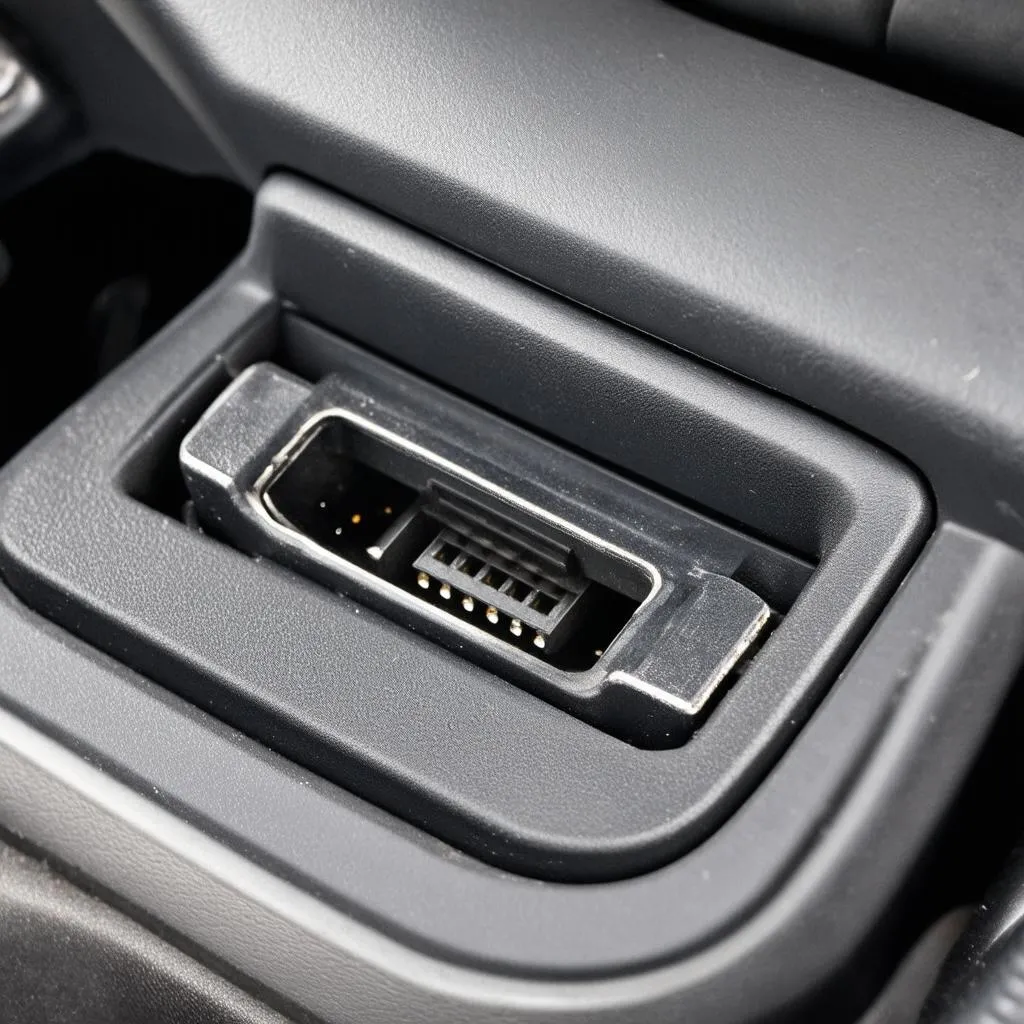“Where’s the darn thing?” you might be thinking. We’ve all been there, staring at our car’s engine bay, trying to locate the elusive OBD port. You’ve got your scanner, you’re ready to diagnose those pesky engine codes, but that elusive port is hiding like a mischievous little gremlin.
Don’t worry, we’re here to guide you through the process of finding the OBD port on your 2003 Ford Escape. This comprehensive guide will walk you through the steps, answer your most pressing questions, and even provide some helpful tips for troubleshooting.
Understanding the Importance of the OBD Port
The OBD (On-Board Diagnostics) port is your car’s window to its inner workings. Think of it like a tiny portal into the car’s mind, allowing you to access vital information about your vehicle’s performance, engine health, and any potential problems.
Why It Matters:
- Diagnostic Codes: The OBD port is your gateway to accessing diagnostic trouble codes (DTCs). These codes are like secret messages from your car’s computer, revealing the source of any issues you’re facing.
- Performance Monitoring: OBD scanners can monitor real-time data, such as engine speed, fuel consumption, and even provide insight into your driving habits.
- Troubleshooting: With a scanner, you can pinpoint the root cause of problems, saving you time and money on unnecessary repairs.
The Quest for the OBD Port on Your 2003 Ford Escape
For the 2003 Ford Escape, the OBD port is conveniently located underneath the dashboard, on the driver’s side, near the steering column.
- Tip: Look for a rectangular, 16-pin connector. It’s usually color-coded, making it easier to spot.
Finding the Port:
- Get Comfortable: Make sure you’re in a well-lit area.
- Look Under the Dash: Start by looking under the dashboard on the driver’s side, near the steering wheel.
- Feel Around: Gently feel around the area, using your fingers to locate a rectangular connector.
- Check the Color: The connector will usually have a distinct color, often black, white, or blue.
Visual Aid:
 obd-port
obd-port
Unlocking the Secrets: Common OBD-Related Questions
We’ve answered countless questions about the OBD port over the years. Here are some of the most frequently asked questions:
What type of OBD connector does the 2003 Ford Escape use?
The 2003 Ford Escape utilizes the standard OBD II connector, which is found in most vehicles manufactured after 1996.
Can I use a generic OBD scanner on my 2003 Ford Escape?
Absolutely! Generic OBD II scanners are compatible with the 2003 Ford Escape and most other modern cars.
What kind of information can I access through the OBD port?
You can access a wealth of information using an OBD scanner, including:
- Engine Trouble Codes (DTCs)
- Engine RPM
- Vehicle Speed
- Fuel Consumption
- Fuel Pressure
- Engine Temperature
- Airflow Sensor Data
- Transmission Data
What are some common DTCs I might encounter with my 2003 Ford Escape?
Common DTCs on a 2003 Ford Escape may include:
- P0300: Random/Multiple Cylinder Misfire Detected
- P0171: System Too Lean (Bank 1)
- P0420: Catalyst System Efficiency Below Threshold (Bank 1)
- P0174: System Too Lean (Bank 2)
For more information on these codes, check out this helpful resource on generic OBD II codes: https://techcarusa.com/generic-obd-ii-codes/
Is there any connection between the OBD port location and Feng Shui?
While Feng Shui is a fascinating practice that focuses on creating harmony and balance in spaces, it’s not directly related to the placement of your car’s OBD port. However, in the realm of automotives, maintaining your vehicle’s health and ensuring its safety is key to driving with peace of mind.
Unlocking the Secrets of Your Car: A Final Word
The OBD port is your key to understanding and maintaining your 2003 Ford Escape. Don’t let the mystery of its location intimidate you. Armed with this guide and a little bit of exploration, you’ll be able to access essential diagnostic information and keep your car running smoothly for years to come.
Need help with your OBD diagnostics or have any further questions? Reach out to us via WhatsApp: +84767531508. We’ve got a team of automotive experts ready to assist you 24/7.
Let us know your thoughts and share your experiences in the comments below!
Further Explore:
Disclaimer: This article provides general information and should not be considered a substitute for professional advice. Consult with a qualified mechanic for any specific car repair or maintenance needs.